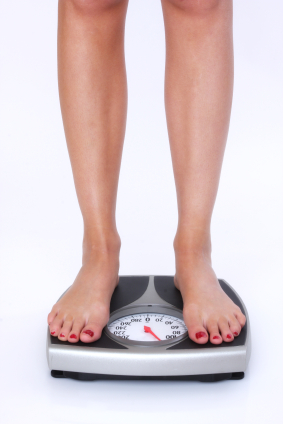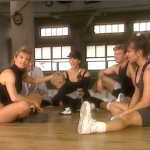Diet Myths and Facts – Why you should NEVER go on a diet
I’ve worked with countless nutritionists over the years, with a range of specialties and degrees, and they all have one thing in common: Every one of them shudders when they hear the word “diet.”
The problem with “diets” are simple: It implies that your focus is short-term. When you go on a “diet,” you expect to deprive yourself of all the foods you love for a short period of time, just to lose weight. Then, you’ll return to the old habits that led to weight gain in the first place. Next, well, I probably don’t have to tell you what happens next.
Of course, stepping off this roller coaster is easier said than done. In a recent survey for WebMD, 52% of Americans said they found it easier to do their taxes than to figure out a way to eat healthfully.
The key is to shift your mindset from “diet” to “lifestyle,” so you can begin a healthy eating plan that will eventually evolve into an effortless part of your life. So when people ask for “one little trick” for weight loss, I try to turn it into a bigger conversation: The question isn’t “What can’t I eat?” The question is “What are some habits I should start practicing for life?” And, of course, there are several answers to that. But here are the biggies:
- Find the carb combo that works for you. If you’ve ever tried dieting, chances are good that, at some point, you’ve tried counting carbohydrates. Sure, there are plenty of good reasons to cut out refined sugars and starchy carbs (and there’s plenty of research reflecting how certain carbs can cause weight gain and other health issues). But following a strict “no-carb” eating plan may come with its own hazards. A recent study reviewed in Harvard Health Letter showed that people who eat breakfast with a combination of protein and carbs are more likely to lose weight and keep it off (as opposed to a no-carb breakfast). The trick is to make sure those carbs are packed with fiber so that you’ll feel fuller throughout the day. Steel-cut oats and fresh fruit are great options. And, make sure you still feel like you’re having a “treat.” Try a protein shake with some blueberries, unsweetened almond milk and chocolate-flavored protein powder for a delicious healthy-carb mix that will fuel you throughout the day.
- Ditch the “diet” drinks. Sure, it’s calorie-free, but diet soda is a far cry from what most experts would consider a “healthy beverage.” People who drink it every day run a 61% higher risk of a vascular issue, according to a study in the American Journal of Clinical Nutrition. And, even when combined with an otherwise healthy diet, those who drink more diet soda are at an increased risk of metabolic syndrome–that means excess body fat, high cholesterol and increased blood pressure or blood sugar levels. Kinda defeats the purpose, doesn’t it? Bottom line here: Think about your drink.
- Make home a healthy (and consistent) environment. We’re all creatures of habit, so if there’s food in our cabinets, chances are good that we’re going to eat them (even against our better judgment). That’s why making your kitchen a healthy environment is so important. The National Weight Control Registry, which tracks 10,000 people who have lost weight and kept it off, has learned that while everyone does it differently, the common thread with all of these people is that they eat the same foods in the same patterns consistently – and they don’t use weekends and holidays as an opportunity to “cheat.” Not that a delicious treat from time to time is always off-limits – but it’s important to avoid the “on-the-wagon / off-the-wagon” mentality – and one way to do that is to stock your kitchen with plenty of delicious and healthy food options you can eat on a regular basis.
- Learn to read labels. Always check the list of ingredients for hidden fats, sugars, sodium and preservative. For instance, you’ve probably noticed the increasing popularity in “gluten-free” foods. And, while there may some value in cutting back on gluten-packed goodies (especially if you suffer from allergies), remember that “gluten-free” does not mean “calorie-free” or “fat-free.” In fact, many gluten-free foods are lower in fiber and nutrients than their “gluten-filled” counterparts. Not to mention that the gluten being removed is often replaced with sugar and fat.
- Go green. Add as many greens as possible to your meals and snacks. That doesn’t mean loading up on iceberg lettuce. When it comes to going green, a good rule of thumb on choosing the healthiest options is “the darker the better.” Spinach, kale, broccoli and collard greens, for example, are all excellent sources of fiber, packed with a wide spectrum of vitamins and minerals, and with the right combination of ingredients, they’re surprisingly delicious (raw OR cooked). For some mouth-watering recipes loaded with yummy greens, check out my Feed Muscle Shrink Fat Diet book.
- Exercise isn’t a four-letter word. A healthy eating plan is only half the battle. A workout routine that incorporates resistance, cardio and flexibility training will not only help speed up the weight loss process, but it will also boost your metabolism, improve your mood and overall outlook – and, of course, it’ll help keep you looking your best. For a complete weight-loss body makeover kit that will help you shape up your eating AND fitness routines, try my Body Sculpt Kit – a total home gym that includes the workouts, equipment, and nutrition plan you’ll need to set you up for success.









I can verify that dieting does not work. I managed to gain and lose 20 pounds in one year and then put them back on again..
Don’t eat processed food for 80% of the time. Don’t say I’m not going to eat cake till I get to my ideal weight because when you do decide to eat the cake you won’t be able to stop.
Try to focus on health and not weight. Exercise is key. I have been a Kathy Smith fan since I was in my teens. I used to wake up early in the morning and exercise to her video tapes…move on to now and I’m exercising using functionally fit and lots of great ideas Kathy’s given me.
I recently got back into exercising (last 3 years) and I sometimes wonder why did I stop?
I have also been a big fan of Kathy Smith’s for years. I now have a grand collection of Kathy Smith’s exercise videos to choose from. Thanks for your continued inspiration Kathy!